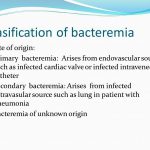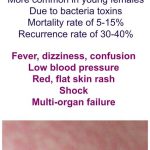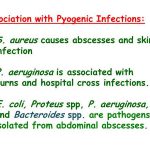
Staphylococci (both S aureus and CoNS) have emerged as the two most common organisms cultured from patients with primary bloodstream infections. The term “primary bacteremia” refers to positive blood cultures without an identifiable anatomic focus of infection. Differentiation of primary bacteremia from infective endocarditis (IE), in which infection of the cardiac valves leads to continuous bacterial seeding of the bloodstream, may challenge even the most experienced clinician. Primary S aureus bacteremia is associated with insulin-dependent diabetes, the presence of a vascular graft, and, most significantly, the presence of an indwelling intravascular catheter.



